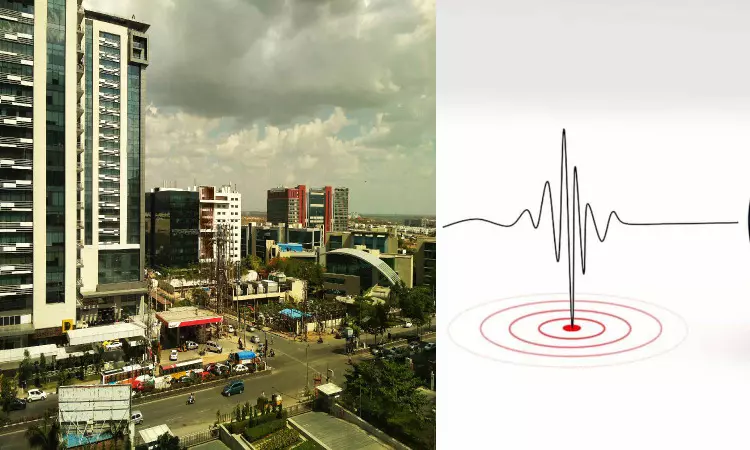106 micro-quakes witnessed in Borabanda, Gachibowli in Oct 2020: NGRI
Hyderabad recorded 106 micro-tremors amid devastating floods in October this year.
By Newsmeter Network
Hyderabad: Hyderabad recorded 106 micro-tremors amid devastating floods in October this year.Scientist at the NGRI National Geophysical Research Institute (NGRI) said around 59 tremors were experienced at Borabanda and 47 at Gachibowli.
Scientists have concluded that loud sound like tremors in Hyderabad was the result of water percolating with intense pressure resulting in micro-quakes.
On the night of Gandhi Jayanti, the densely populated Borabanda recorded mild tremors measuring 1.5 on the Richter scale. The first tremor was witnessed at 8.35 PM and the second at 11. 23 PM. Residents rushed out of their homes and assembled at open spaces. No damage was reported.
The Richter Scale recorded 59 such events between October 2 and 30 in Borabanda alone. During mid-October when floods hit the city, Gachibowli residents complained of loud sounds and tremors. The instruments recorded 47 micro quakes between 16 and 29th of October, said NGRI
Speaking to NewsMeter, Dr. Sri Nagesh, Head of Seismology, CSR, NGRI, said the tremors are of magnitude less than 2 on the measuring scale.
"These are environmental semiology ... The earthquakes are triggered by natural causes. The intensity of hydro seismicity leads to micro-quakes. Tremors are monitors with specially installed instruments at 10 stations, few located at My Home, IIT Hyderabad, Borabanda. The instruments record seismic waves propagating from time to time. A sign-in form of a wiggle indicates a tremor," he said.
Why is Borabanda witnessing frequent micro-quakes?
Borabanda is densely populated and only a few households have pipeline connections. The area has undergone exhaustive drilling of borewells.Scientist Srinagesh at National Geophysical Research Institute (NGRI) in Hyderabad said there are two aspects of tremors occurring in Borabanda. "In 2017 and 2020, Hyderabad received excessive rainfall. According to data, this year monsoon was active for 82 days and with a result, twin cities received above-normal rainfall. And Tremors have occurred post monsoons," he said.
Srinagesh noted that over the years, Boranbanda being a rocky area developed fractures and voids. "Loud sound like tremor occurs when water percolates with intense pressure. Also, rocks have small pores and when water enters, it expands creating stress and triggers loud sounds. The phenomenon is called hydro seismicity. Minor tremors may continue in Borabanda. The rumbling sound depends on the rate of percolation and the speed of the water. One should not look at it as a threat," he said.
Also, Data revealed that during a lockdown, the number of mild tremors has increased. Close to 150 earthquakes, mostly micro, were recorded. Of them, 21 measured between 2.0 to 2.9 while the rest were between 0 and 2.0 on the scale.
"During the lockdown, we studied about microearthquakes in Hyderabad. No vehicular noise and other industrial activity help the instruments to record even 20 percent of the earthquakes," Srinagesh said. NGRI has 200 stations across the country.